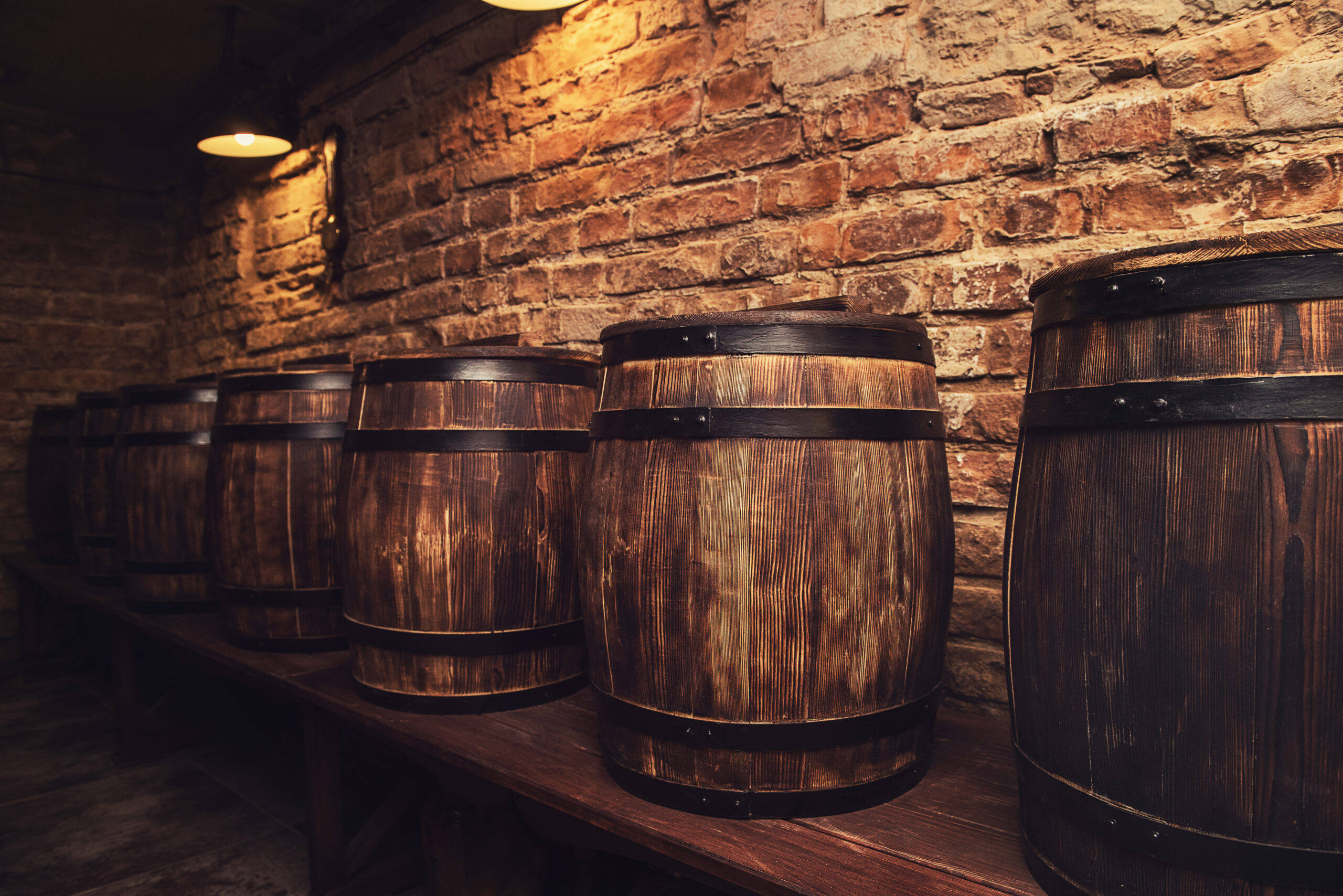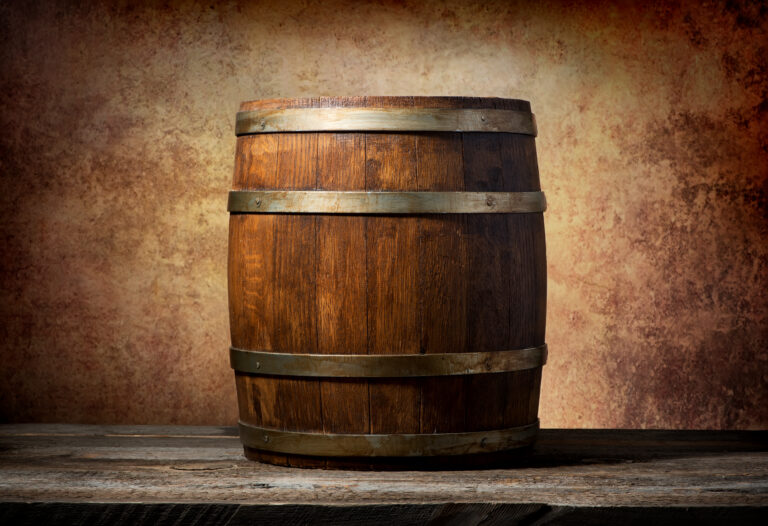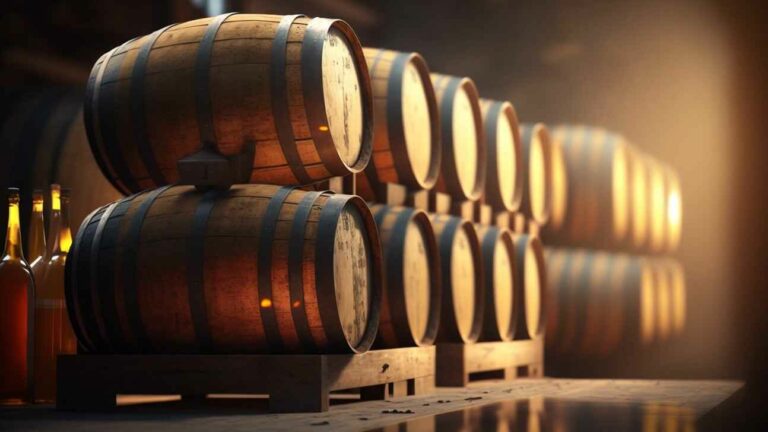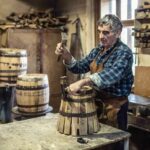Ever wondered what magic happens to those venerable whiskey barrels after they’ve cradled golden bourbon or rich Scotch? Well, pull up a chair, because it turns out many distilleries, especially those passionate about their craft, give them a fiery second life through a fascinating process called recharring. It’s a bit of a forgotten art, but this barrel reconditioning allows distillers to squeeze more mileage and, more importantly, infuse their spirits with incredibly intricate flavors.
You’re probably well-acquainted with how barrel aging transforms whiskey – it’s the secret behind that beautiful amber hue and those comforting oaky, vanilla notes. But after a few glorious years of use, even the finest barrels start to lose their charm, their ability to truly sing to the whiskey. That’s where recharring struts in. Distilleries carefully empty these seasoned vessels, then, with a controlled blaze, they torch the insides, coaxing a fresh char to life. By re-charring the oak barrels, they’re effectively giving them a spirited resurrection for another round of whiskey maturation. This ingenious process can keep a single barrel contributing to premium whiskey production for a remarkable 80 years!
It’s truly a win-win for everyone involved in the whiskey industry. Distilleries save a pretty penny by extending the life of their precious barrels, and we, the devoted whiskey enthusiasts, get to savor the complex, nuanced flavors that only come from spirits nurtured in truly well-seasoned wood. So, the next time you’re lost in the smooth embrace of an exceptional bourbon or Scotch, remember, you might just be tipping your hat to the ancient wisdom of recharring. Not a bad outcome for dusting off an age-old tradition, eh?
The Storied Past of Whiskey Barrel Recharring
This practice of re-charring whiskey barrels isn’t some newfangled trick; it’s a centuries-old tradition. Historically, skilled coopers would meticulously scrape away the old char and carefully re-char the inside of used oak barrels to prepare them for another cycle of aging whiskey.
A Fading Craft: The Art of Barrel Rejuvenation
It’s a bit sad, but the art of re-charring barrels has become a fading craft. Most modern distilleries, driven by efficiency, tend to give barrels a couple of goes before simply replacing them. However, a growing number of craft distillers are passionately reviving this time-honored tradition, all in the pursuit of producing complex whiskey flavors.
Recharring a used barrel demands both skill and patience. Coopers, armed with specialized tools, carefully remove the old char and any lingering residue from the previous batch. Then, they artfully re-char the interior over an open flame, meticulously adjusting the intensity and duration of the charring. This newly charred wood vastly increases the surface area for the whiskey to interact with, a crucial step in developing those rich and utterly unique flavor notes.
Many whiskey aficionados swear by the results, believing that barrels recharred by hand can yield superior outcomes compared to brand-new ones. The wood, already seasoned from prior use, offers a mellower influence on the final spirit. Recharring also allows more subtle flavors from the wood to emerge, creating an unparalleled smoothness and depth of character that new barrels sometimes lack.
Of course, barrel recharring demands extra time, effort, and specialized expertise. For large distilleries focused on high volume and efficiency, it might not seem economically viable. But for craft distillers dedicated to quality and tradition, bringing back this lost art can be a truly worthwhile investment. The proof, as they say, is in each rich, distinctive sip of recharred whiskey.
Unveiling the Mystery: Why Were Barrels Originally Charred?
Barrels weren’t originally charred just for kicks; it served a truly vital purpose. When whiskey first began its journey of aging, charring the barrels was a game-changer for improving its flavor profile.
As the whiskey embraces the charred wood over time, a fascinating symphony of chemical reactions unfolds. The charred layer acts like a natural filter, absorbing undesirable compounds from the spirit. Simultaneously, it generously releases those delightful flavors we crave, like vanilla, mellowing and enhancing the whiskey’s aroma and taste.
Charring whiskey barrels is a delicate dance. The barrels are briefly introduced to an open flame, just long enough to char the inner surface without compromising the barrel’s structural integrity. The level of char is a precise decision, dictating the desired flavor profile the distiller aims to achieve. A lighter char might impart more subtle flavors, while a heavier char unleashes bold, smoky notes.
In the nascent days of whiskey production, the discovery of barrel charring was, surprisingly, accidental. Legend has it, a warehouse fire inadvertently charred some barrels. Workers were astounded to find that the whiskey from these charred barrels tasted significantly better! This happy accident sparked the intentional practice of charring barrels before filling them with spirit.
Over time, as whiskey gracefully ages, the effects of the char layer gradually diminish. That’s precisely why many distillers now re-char used barrels to revitalize them before their next filling. This traditional barrel treatment helps maintain a consistent flavor profile from batch to batch. Some even argue that re-charred barrels can produce whiskey with even more complex flavors than those aged in solely new charred barrels.
Re-charring barrels allows distillers to extract more value from a single barrel, making it a sustainable practice that ultimately yields premium whiskey at a lower cost. Simultaneously, it pays homage to the rich tradition of barrel aging and helps craft an unmistakably smooth and distinctive spirit. All in all, the art of re-charring whiskey barrels truly deserves its rediscovery.
The Longevity Secret: How Recharring Extends Barrel Life
Recharring whiskey barrels is a brilliant way to extend their useful life and significantly enhance the flavor profiles of the aged spirits. As barrels are repeatedly used, the char layer and wood staves naturally start to break down, allowing more oxygen to interact with the whiskey. Recharring the barrels heroically restores the char layer and rejuvenates the wood, enabling them to be reused for several more aging cycles.
The Recharring Process: A Detailed Look
The recharring process involves carefully torching the inside of used barrels to caramelize the wood sugars and create a fresh, active char layer. Specialist cooperages, masters of barrel repair and reconditioning, meticulously dismantle the barrels, inspect and repair any damage to the staves, and then expertly reassemble them. The barrels are then precisely rotated over an open flame, charring the inside to the distiller’s specified depth of char. Deeper char levels mean that more color and flavor compounds will be imparted to the whiskey.
Flavor Benefits of Recharring
Recharring breathes new life into the barrel by creating active charcoal and fresh wood compounds that eagerly interact with the whiskey. It magnificently restores the barrels’ ability to mellow and filter the spirit, expertly softening any harsh edges. The freshly charred wood also generously provides tannins, lignins, and wood esters that enrich the whiskey with delightful notes of vanilla, caramel, and spice, creating a truly complex flavor profile.
Cost Savings Through Recharring
For distilleries, reusing barrels through recharring offers significant cost savings. Barrels typically represent a substantial portion of a whiskey’s production cost. By recharring barrels 3-5 times or even more, distilleries can maximize their barrel investment and keep more capital available for other vital areas of their business, a true boon for sustainable distilling.
Recharring whiskey barrels is a tradition as old as barrel aging itself. While modern technology and economic pressures have influenced some distilling practices, recharring steadfastly remains an art form that allows the unique character of the wood and char to shine through, batch after beautiful batch. For many distilleries, it’s an indispensable part of maintaining the exceptional quality and consistency of their aged whiskies.
The Intricate Dance: The Complex Process of Recharring Barrels
The process of recharring whiskey barrels is a testament to complexity and demands considerable time, yet it’s absolutely vital for reusing barrels and producing truly rich, full-bodied whiskey.
First Steps: Cleaning the Barrels
The initial and crucial step is a thorough cleaning of the used barrels to meticulously remove any lingering residue from the previous aging process. Barrels are diligently rinsed, scrubbed, and steamed, effectively stripping them down to their pristine bare wood. This barrel cleaning is essential for subsequent steps.
Igniting the Transformation: Re-charring the Barrels
Once impeccably clean, the barrels are poised for their fiery transformation: re-charring. This involves deliberately burning the inside of the barrels to caramelize the wood sugars and forge a fresh layer of charcoal. This new charcoal layer is the magic ingredient that will impart both flavor and color to the whiskey during its subsequent aging.
Barrels are strategically positioned over an open flame and carefully rotated as fire is skillfully fed through the bunghole. Experienced coopers, with an artist’s touch, closely monitor the intensity and duration of the burn to achieve a light, medium, or heavy char, precisely matching the desired end result. The barrel is then expertly extinguished and allowed to cool.
The Quality Check: Tasting and Testing
Before the barrels are lovingly refilled, the newly charred interior undergoes a rigorous testing phase to ensure proper penetration and optimal flavor potential. Using specialized tools, coopers delicately shave off tiny bits of the charred wood to taste and assess if the barrel is perfectly ready for reuse. The char level, aroma, and taste of these shavings are the determining factors in whether the barrel needs further re-charring.
The Grand Finale: Filling and Aging
Once the re-charring is complete and the barrel triumphantly passes the tasting test, it’s joyfully filled with distilled spirit, ready for its aging journey. As the whiskey matures within the barrel, compounds nestled within the wood and charcoal gracefully infuse into the liquid, imparting the distinctive flavor and the alluring amber color we so cherish in aged whiskey.
The art of recharring barrels to achieve that perfect char and maximize flavor potential demands the unparalleled skill and expertise of coopers who have dedicated years to honing their craft. While undoubtedly time-consuming, reusing barrels in this traditional way allows distillers to produce superior whiskey with an authentic, handcrafted quality. The ultimate result is a spirit brimming with richness, depth of flavor, and a soulful character that can only spring from time spent in a well-seasoned, recharred barrel.
The Flavor Architect: The Impact of Recharring on Whiskey Flavor
Recharring whiskey barrels is nothing short of an art form that profoundly impacts the flavor of the whiskey. As barrels are continuously reused, the existing char inside naturally begins to break down, losing its ability to impart flavor. Recharring a barrel involves lightly torching the inside to reactivate the charred wood, breathing new life into its flavor-giving potential.
Amplified Wood Flavors
Recharring is a master key that unlocks and enhances desirable wood flavors like vanilla, caramel, and spice in the whiskey. The freshly charred wood eagerly releases a symphony of aromatic compounds that beautifully infuse into the spirit. Without recharring, these precious wood flavors can become dull and muted over time and repeated use.
Whispers of Smoke: Smokey Nuances
A recharred barrel will often bless whiskeys with subtle, intriguing smokey nuances. The char thoughtfully creates phenols in the wood that impart a gentle smokiness. For some distillers and discerning consumers, this delicate smokey character is an integral part of the desired barrel-aged whiskey flavor profile.
A Deeper Hue: Richer Amber Colors
Whiskeys aged in recharred barrels tend to develop a richer, deeper amber color, a visual feast. The freshly charred wood contributes valuable color compounds like vanillin and tannins to the spirit. Recharring is sometimes specifically employed to produce whiskeys with darker, captivating caramel-like hues.
The Art of Control: Varying Levels of Char
Skilled coopers possess the incredible ability to rechar barrels to different levels – from a light toast to a heavy char. The level of char directly dictates how much wood flavor and color will be imparted to the whiskey. A heavier char will produce more robust wood and smoky notes, a bolder statement. A lighter toast, on the other hand, enhances wood flavors in a more subtle, nuanced way. Discovering the perfect level of rechar for a particular whiskey is truly an art form in itself.
Recharring barrels is a craft that demands experience and an intuitive understanding of how wood and spirit dance together. For distillers striving to create uniquely flavored whiskeys with a profound sense of place, recharring is an incredibly powerful tool for enhancing and shaping the very essence of their artistry and passion.
The Fading Flame: The Decline of Recharring in the Whiskey Industry
The practice of recharring whiskey barrels has, regrettably, declined over time, largely due to shifts in production methods and prevailing economic factors within the whiskey industry.
The Shifting Sands of Cost Savings
Originally, recharring barrels was a primary cost-saving measure. Barrels were expensive to produce, so distillers ingeniously recharred used barrels to extend their lifespan and extract more valuable use from them. However, as barrel-making technology advanced and prices gradually dropped, the economic benefits of recharring diminished. Many distillers found it simply more affordable to opt for new barrels for each aging cycle.
Evolving Palates: Changes in Taste Preferences
Consumer tastes also elegantly shifted towards whiskeys aged in new charred oak barrels. The distinct flavors imparted by new oak, like vanilla, caramel, and spice, became highly desirable and characteristic of beloved American whiskeys. Recharring used barrels, while still adding oak character, produced subtler flavors that were unfortunately perceived as inferior by many drinkers.
The Quest for Consistency
Using new barrels for each aging batch also allowed for a greater degree of consistency. The oak in each new barrel is essentially uniform, granting the distiller better control over the flavor profile of the finished whiskey. Recharring barrels, even when executed with meticulous care, can sometimes yield variable results depending on the prior condition of the used barrel. For large distillers fixated on producing a consistently branded product, new barrels were undeniably preferable.
A Revived Lost Art
While recharring is a rare sight in large-scale production today, some pioneering craft distillers are thoughtfully reviving the technique to create truly unique and complex whiskeys. When done skillfully by a master distiller, recharring can impart a magnificent blend of flavors from both the original char and the newly applied char, resulting in an truly exceptional spirit. Though undeniably labor-intensive, recharring empowers creative distillers to make the most of their resources and boldly push the boundaries of flavor. For whiskeys with truly distinctive character, recharring may indeed be well worth the dedicated effort.
The Phoenix Rises: The Resurgence of Traditional Recharring Methods
The traditional practice of recharring whiskey barrels has experienced a thrilling resurgence in recent years. Master distillers are rediscovering recharring as a powerful tool to impart more complex and nuanced flavors to their precious spirits.
The Recharring Process Revisited
Recharring a barrel involves precisely burning the inside of a used whiskey barrel to revitalize the wood with a new char. The barrel is first unloaded, meticulously rinsed, and allowed to air out. Then, controlled fires are strategically ignited inside the barrel to lightly char the wood. The level of char is a carefully calculated decision, depending on the precise flavor profile the distiller aims to achieve. More char generally translates to bolder, smokier flavors, while less char produces more subtle and delicate notes.
Once expertly recharred, the barrel is ready to embark on its next journey, to be filled again. The freshly charred wood eagerly interacts with the spirit, infusing it with the distinctive recharred barrel flavors like vanilla, spice, and a whisper of smoke. Recharring can even be performed multiple times to a single barrel, resulting in barrels with an almost incense-like quality from the captivating layers of char.
A Tradition Reborn: Sustainable Distilling
Although recharring was a common practice in the early days of whiskey production, it sadly fell out of favor for many years. However, artisanal distillers have lovingly brought back recharring to craft unique, full-flavored spirits imbued with a rich sense of history and tradition. Consumers who appreciate craft spirits are increasingly drawn to these traditional, small-batch production techniques.
Recharring also boasts significant environmental benefits, making it more sustainable and eco-friendly. It empowers distillers to extract more valuable use out of a single barrel, significantly reducing waste. The newly charred wood imparts robust flavor to spirits, meaning less time is needed in the barrel overall. Some distillers have even found that recharring a barrel 3-4 times can achieve the same flavor intensity as a brand-new charred barrel, a true win for resource conservation.
By beautifully combining state-of-the-art distilling techniques with revered traditional practices like recharring, whiskey makers are creating spirits that magnificently represent the best of both worlds. Recharring allows the rich, authentic flavors of yesteryear to gloriously live on in today’s craft spirits. For devoted whiskey lovers, that’s undoubtedly something worth raising a glass to.
Pioneering Spirit: Select Distilleries Bringing Back Recharring
Recharring whiskey barrels is an age-old practice that a select few, forward-thinking craft distilleries have courageously revived in recent years. As barrels are reused, the charred inner layer of the barrel naturally begins to break down, resulting in less flavor and color being imparted to the spirit. Recharring a barrel involves carefully sanding down the existing char and then expertly re-charring the inside of the barrel to restore its vital ability to influence the whiskey.
A few pioneering distilleries leading the charge in bringing back barrel reconditioning are St. George Spirits, RoughStock Distillery, and Westland Distillery. These visionary distilleries are passionately resurrecting the lost art of reusing barrels through recharring to craft complex, robust whiskeys.
St. George Spirits: A California Innovator
Based in Alameda, California, St. George Spirits brilliantly rechars used bourbon barrels to age their exceptional single malt whiskey. The recharring process allows them to extract more value and mileage from each barrel, leading to more accessible whiskey prices as well as a commendable commitment to sustainable distilling. The repeated charring creates fascinating layers of flavors from the multiple spirits that have graced each barrel.
RoughStock Distillery: Montana’s Traditionalist
RoughStock Distillery in Bozeman, Montana, is a small yet mighty craft distillery dedicated to recreating historic American spirits. They faithfully rechar used barrels to age their superb bourbon and rye whiskeys. Recharring barrels allows them to impart a heavier char flavor, providing a perfect balance to the sweeter notes inherited from the used barrels. Each instance of recharring adds a delightful new layer of caramel, vanilla, and spice flavors.
Westland Distillery: Crafting Complexity in Seattle
Based in Seattle, Washington, Westland Distillery produces exceptional single malt whiskeys aged in recharred American oak casks that previously held bourbon. Westland meticulously rechars their barrels to create a foundational layer of rich molasses and toffee flavors, beautifully complementing the lighter stone fruit notes that emerge from the used barrels. Their innovative approach to barrel aging empowers Westland to craft complex yet balanced single malt whiskeys.
The revival of recharring barrels is an incredibly exciting trend for craft distilleries eager to create unique, flavorful whiskeys in a truly sustainable manner. By thoughtfully combining the use of seasoned barrels and the art of recharring, these distilleries are able to craft whiskeys with captivating layers of complementary flavors, often at more appealing price points. This lost art of barrel reuse is, thankfully, making a significant comeback in the whiskey world.
A Glimpse into Tomorrow: The Future of Recharring: Sustainability and Tradition
The future of recharring whiskey barrels shines brightly. As the vital concepts of sustainability and enduring tradition gracefully intertwine, more and more distilleries are wholeheartedly recognizing the profound benefits of this age-old practice.
Smart Savings: Cost-Effectiveness
Recharring barrels is a smart move that saves money. New oak barrels can be a hefty investment, costing anywhere from $500 to $1000 each, an expense that quickly adds up for distilleries. Recharring significantly extends the life of a barrel for an additional 3-5 fills, providing years of valuable use at just a fraction of the cost.
Good for the Earth: Sustainable Distilling
By committedly reusing barrels, less wood is needed overall, a win for the environment. Precious oak forests are spared, and invaluable natural resources are conserved. The environmental impact of producing and shipping brand new barrels decreases substantially. Recharring also brilliantly reduces waste, as barrels are not simply discarded after a single use.
Honoring the Past: Embracing Tradition
Barrel recharring has been a cherished practice for centuries. Distilleries that wholeheartedly embrace this traditional method are able to craft a more authentic and soulful product. The subtle, nuanced flavors imparted by a recharred barrel are incredibly difficult to replicate using new oak alone.
Tailored to Perfection: Flavor Customization
Skillfully varying the char level and toast of a barrel allows for precise customization of flavor profiles. A heavier char might be perfectly suited for bourbons, while a lighter toast elegantly complements tequilas and rums. Master distillers can artfully create unique tastes precisely tailored to their distinct spirits.
The Horizon: The Future of Whiskey
As the spirits industry continues its exciting expansion, recharring presents an incredibly attractive solution for scaling sustainably and cost-effectively. While recharring may not entirely replace the use of new oak barrels, it undoubtedly enables growth in a truly responsible way. More and more craft distilleries are discovering how recharring helps them stay true to their roots and their commitment to exceptional quality.
The vibrant revival of recharring whiskey barrels ensures that the traditional, sustainable methods of the past will forever hold a revered place in the future of whiskey production. By valuing heritage and innovation with equal fervor, the spirits industry can continue to improve and inspire for generations to come.
The Last Drop: Reflections on a Time-Honored Craft
So, there you have it – the captivating story of how recharring barrels played such a pivotal role in shaping the exquisite flavor of some of the world’s most cherished whiskeys. Though barrel reconditioning was once a common practice, today, only a dedicated handful of distilleries still commit to it. As consumers, we’re truly fortunate that some distillers prioritize tradition and quality over sheer efficiency and ruthless cost-cutting. The next time you slowly savor a glass of fine whiskey, take a moment to ponder the incredible journey it undertook to develop its unique flavor and captivating aroma. Appreciate the profound craftsmanship and unwavering patience required to produce a spirit that can be enjoyed for generations. Recharring barrels might seem like a lost art, but as long as there are passionate master distillers devoted to their craft, this beautiful tradition will undeniably live on, captured within every single bottle.







